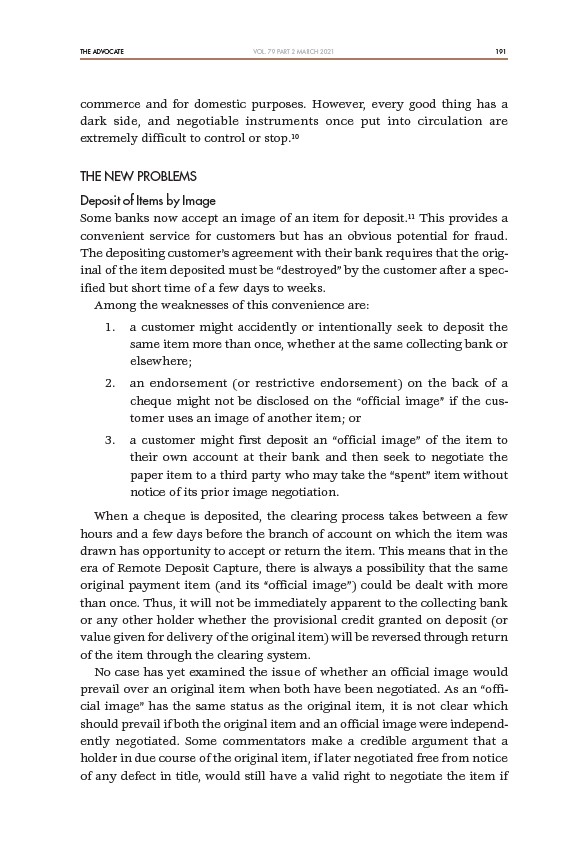
THE ADVOCATE 191
VOL. 79 PART 2 MARCH 2021
commerce and for domestic purposes. However, every good thing has a
dark side, and negotiable instruments once put into circulation are
extremely difficult to control or stop.10
THE NEW PROBLEMS
Deposit of Items by Image
Some banks now accept an image of an item for deposit.11 This provides a
convenient service for customers but has an obvious potential for fraud.
The depositing customer’s agreement with their bank requires that the original
of the item deposited must be “destroyed” by the customer after a specified
but short time of a few days to weeks.
Among the weaknesses of this convenience are:
1. a customer might accidently or intentionally seek to deposit the
same item more than once, whether at the same collecting bank or
elsewhere;
2. an endorsement (or restrictive endorsement) on the back of a
cheque might not be disclosed on the “official image” if the customer
uses an image of another item; or
3. a customer might first deposit an “official image” of the item to
their own account at their bank and then seek to negotiate the
paper item to a third party who may take the “spent” item without
notice of its prior image negotiation.
When a cheque is deposited, the clearing process takes between a few
hours and a few days before the branch of account on which the item was
drawn has opportunity to accept or return the item. This means that in the
era of Remote Deposit Capture, there is always a possibility that the same
original payment item (and its “official image”) could be dealt with more
than once. Thus, it will not be immediately apparent to the collecting bank
or any other holder whether the provisional credit granted on deposit (or
value given for delivery of the original item) will be reversed through return
of the item through the clearing system.
No case has yet examined the issue of whether an official image would
prevail over an original item when both have been negotiated. As an “official
image” has the same status as the original item, it is not clear which
should prevail if both the original item and an official image were independently
negotiated. Some commentators make a credible argument that a
holder in due course of the original item, if later negotiated free from notice
of any defect in title, would still have a valid right to negotiate the item if